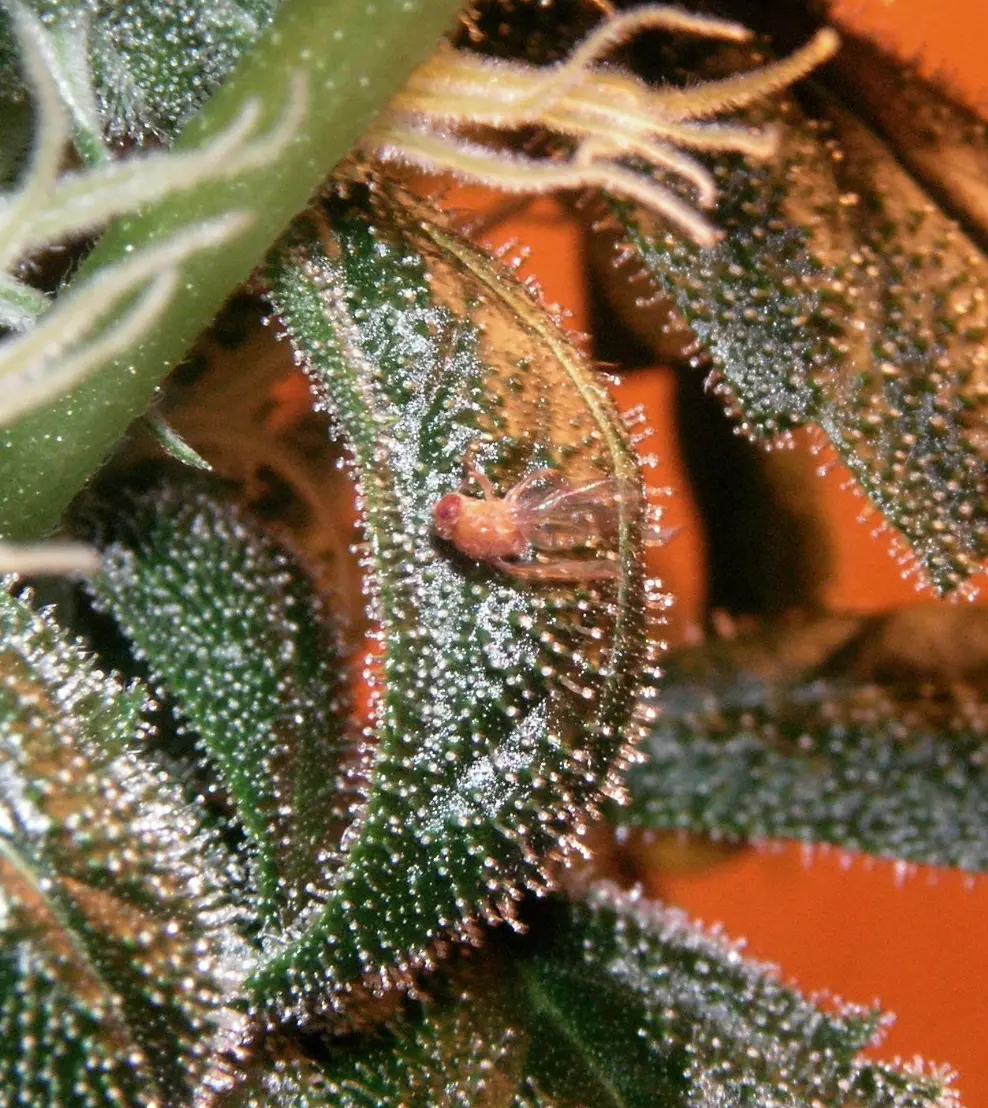
Disclaimer: This post may contain affiliate links where I may earn commission from qualifying purchases. Information presented on this post is intended as a personal and professional representation of my views on food, nutrition, and cannabis. This post is designed for educational purposes only. It is not intended to be a substitute for informed and personalized medical advice or care. Please consult your physician or health care provider before making cannabis infusions.
What Are Terpenes And Why Are They Important?
Cannabis flower has a musky and pungent aroma that comes from plant compounds called terpenes. Even before you can see a flower, you can already smell it. These aromatic compounds provide many flowers and herbs with a distinctive scent and impact their flavor.
Terpenes occur in many herbs and spices, but cannabis contains more than 150 of them. These compounds are present in trace amounts. However, the most prominent ones blend perfectly to provide cannabis strains with their distinctive aromatic profiles. For example, the combination of terpenes in the Cherry Pie cannabis strain gives it its sweet and sour cherry pie smell.
Aside from giving the cannabis plants their unique flavor and aroma, they also provide other useful functions. For instance, they produce a range of mind-altering and potentially therapeutic effects in weed users.
The Definition of Terpenes
Terpenes are aromatic naturally-occurring compounds produced in the trichomes of cannabis plants. The trichomes are the translucent resinous glands concentrated on the surface of buds but are also scattered throughout the stems and leaves. These resin glands also produce the well-known cannabinoids CBD and THC.
Terpenes have an essential role in the growth and immunity of cannabis. Aside from producing attractive smells, these compounds also impact the flavor of the flower and enhance the color of the leaves and buds. While it enhances the plant's outward aesthetics, it also deters microbes and pests.
The terpene geraniol, for example, is a powerful substance that repels insects and other pests that may be tempted to eat the plant. However, the terpenes linalool and terpinolene attract insects that help pollinate cannabis flowers. These organic compounds help enhance the plant's immunity while ensuring the successful propagation of the plant.
Multiple factors affect the production of terpenes in the trichomes. External variables, such as light, temperature, nutrients, and growing mediums, are some of the most prominent. Growing the plants indoors and outdoors can also impact the terpene levels.
Most of the terpenes are volatile. They can be easily lost during the extraction process. Therefore, many low-quality cannabis products barely have distinctive aromas and flavors. Thankfully, many producers use sensitive extraction methods, such as live resin extraction to preserve as many terpenes as possible.
Manufacturers make live resin by flash freezing fresh cannabis flowers to preserve the volatile compounds stored in the resinous trichomes. The end product is a more flavorful and aromatic cannabis experience.
Classification of Terpenes
Terpenes can be classified based on their structure or on how many units of isoprene they contain. They commonly contain 2, 3, 4, and six units. Tetraterpenes or compounds that contain eight isoprene units form a different class called carotenoids.
- Monoterpene - contains two isoprene units
- Sesquiterpenes - contain three isoprene unit
- Diterpenes - contains four isoprene units
- Triterpenes - contains six isoprene units
Myrcene, linalool, and pinene are monoterpenes. Humulene is an example of a sesquiterpene. Cafestol and cembrene are diterpenes. Squalene, a popular compound found in shark liver oil, is a triterpene.
Terpenes and Terpenoids
When discussing cannabis, we are dealing with terpenes, not terpenoids. You should not confuse these two terms together. A terpene (pinene, limonene, or myrcene) is a compound that has a simple hydrocarbon structure. A terpenoid or isoprenoid is an oxygen-containing hydrocarbon. It is a modified class of terpene with a different function.
Why Plants Produce Terpenes
Plants produce terpenes for a reason. They protect against insects, herbivores, and other external threats. They also play a crucial function in oxygenation and regeneration. Hence, because of these properties, it is no surprise that many of these compounds have the potential to enhance the immunity of humans. It appears that people who consume these aromatic compounds gain some form of benefit.
There are more than 150 terpenes in the cannabis plant. However, only a few of them exist in significant quantities. In fact, many of them are present in extremely low quantities and usually do not show up in laboratory tests. Why does cannabis even produce these compounds in the first place?
Scientists are still conducting studies to determine their benefits and why they even exist. The plant may continue to produce diverse terpenes to fend against the escalating threat from natural enemies. It is also possible that the production of diverse terpenes results from human intervention. The continuous breeding and cultivation of cannabis strains to produce desirable traits may play a role in the chemical diversity within each specific cannabis flower.
Terpene Preservation
Terpenes provide cannabis flowers with their specific taste and aroma. In short, they enhance the cannabis experience. Hence, many growers and manufacturers pay close attention to terpene preservation to provide high-quality cannabis products.
Growing, harvesting, curing, and other processes can impact terpene production and expression. These environmental factors can either enhance or damage terpene production in the plant. Indoor cultivation can give the grower more control over the environmental factors that affect cannabis growth.
Hydroponics is now a popular growing method among many cannabis growers. The plants grow in water and nutrient solutions instead of soil. While it may not necessarily stop the production of terpenes, excess nutrients may lower terpene production. Hence, reducing nutrient intake a week or two before harvest is essential.
The time of harvest also affects terpene expression. Growers should not harvest too late or too early. Harvesting too late will decrease the potency of the active compounds in cannabis. Harvesting too early means that the cannabinoids and terpenes have not yet reached maximum production. If you want buds with rich terpene profiles, harvest them at the right time when the trichomes are ripe for harvest.
The Effect of Terpenes on the Human Body
Humans are not new to the aromatic properties of terpenes. We have used essential oil products for aromatherapy for many hundred years. If you have used lavender oil before, you may already know that it contains linalool, a terpene that can help you relax. If you are familiar with cannabis strains, then you may have come across the names of terpenes found in them.
The scientific literature on the medicinal properties of terpenes may not be as abundant as research on CBD and THC. Still, it sheds light on these aromatic compounds' potential therapeutic qualities. The effects of terpenes may appear to be more than just feel-good benefits. The potential therapeutic benefits of terpenes also evoke their function in the cannabis plant.
Potential Medicinal Benefits of Terpenes
Preclinical studies on animals have identified some of the therapeutic benefits of terpenes. However, we should note that the research on these compounds is still in the infancy stage. It has not yet been widely performed on human subjects. We still have to wait for more research to be conducted to better understand how terpenes impact human health.
Pain relief. Perhaps the most common effect of cannabis compounds is pain relief. THC and CBD have been shown to relieve pain. Researchers have also found out that terpenes mimic the pain-relieving effect of cannabinoids. The interaction between the terpenes and cannabinoids may be responsible for this positive effect.
Antidepressant. Many antidepressant drugs make use of herbal extracts that contain terpenes. Many of these herbs contain beta-pinene and linalool.
Antiviral. Many terpenes like beta-pinene, camphor, and caryophyllene show a strong ability to kill viruses.
Antimicrobial. Various terpenes also display antimicrobial properties or the ability to stop microorganisms from performing damaging effects on the body. For example, terpenes, such as geraniol, eucalyptol, and menthol, show strong antimicrobial abilities.
The Entourage Effect of Cannabinoids and Terpenes
Many scientists suggest that cannabinoids, terpenes, and other cannabis compounds work together in synergy to produce what is known as the entourage effect. This statement is based on the emerging evidence that the plant compounds enhance each other's effects when taken together, as opposed to when taken by themselves.
It is crucial to note that there is still a lot that we do not know about cannabis terpenes and their interactions with other cannabis compounds. We have to wait for more conclusive studies to be done on humans. Nevertheless, the growing clinical interest in cannabinoids and terpenes provides us with fascinating data about how these compounds affect our human bodies.
Related Topic: 5 Reasons Why I Consume Medical And Recreational Cannabis
7 Most Prominent Terpenes
There are more than 150 terpenes in cannabis, but only a select few of them are worthy of our attention. Here are some of the most prominent terpenes found in cannabis and other relevant information about them.
Myrcene
Like cannabinoids, there are two most prominent terpenes in the cannabis plant. One is myrcene, and the other is caryophyllene. Most cultivars have either one or both of these terpenes as the most dominant.
Aside from cannabis, myrcene is also found in lemongrass, mango, and thyme. It has an earthy aroma, which is common in most cannabis plants. Several studies show that myrcene may be an effective painkiller, antioxidant, and anti-inflammatory.
Caryophyllene
Beta-caryophyllene is another dominant terpene in cannabis. Aside from cannabis, it is also found in cloves, rosemary, and hops. This is why the presence of this terpene gives a smell similar to these plants. Like myrcene, this terpene also has the potential to act as a painkiller and anti-inflammatory. Some animal studies show that it may also help heal wounds faster.
Pinene
Pinene is a terpene that is often expressed in nature. It carries with it the familiar smell of pine trees and conifers. Pinene is also the reason why some cannabis cultivars smell like pine-filled mountains. Aside from providing a fresh and natural smell in cars, it can provide anti-inflammatory properties, improve airflow in the lungs, and possibly prevent ulcers.
Limonene
Limonene may be familiar because it is the same terpene found in lemons and other citrus fruits. It is used as a fragrance in various products because of its fresh, clean smell. A review of the effects of limonene shows that it may have anti-inflammatory, antioxidant, and anticancer properties. It may even have the potential to protect the liver, the cardiovascular system, and gastrointestinal tissues.
Humulene
Humulene is a terpene in hops, clove, sage, basil, ginseng, and black pepper. Research findings show that it may be an effective topical pain reliever and anti-inflammatory.
Linalool
Linalool is a prominent terpene because of its relaxing properties. Aside from cannabis, it is also found in lavender, rose, jasmine, coriander, and rosewood. It has a very pleasing floral scent and is often used in perfumes and soaps. Just like any other terpene, it can potentially reduce pain and inflammation. Research studies also show that it can inhibit fungal growth outside the body, fight anxiety, and provide soothing effects.
Bisabolol
Bisabolol is a common ingredient in cosmetics because of its mildly floral aroma. It has been thought to promote skin healing and has been shown to reduce skin inflammation in animals.

Hey I’m Anna, also known as Cannabinista™
I’m a cannabis content creator, recipe developer, and enthusiast for the ancient plant. I’ve dedicated my platforms to helping you create a healthy relationship with cannabis through mindful consumption and providing education that resonates with the modern consumer.
My ultimate goal is to debunk traditional stoner stereotypes and myths, by showcasing the world of cannabis through my POV.

